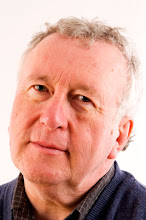In this 40th Anniversary Season . I was going to continue my personal history of the Bench Theatre based on reminiscence and faulty memory and still have that intention. However the deadline for the first Benchpress of 2009 arrived before I expected and before I was ready.
I decided, therefore, to use this column as means of disseminating some theatrical facts and defining some theatrical terms, with which I grew up and yet somehow seem to have fallen into disuse. Elsewhere I have described the origin of the theatrical custom of not allowing whistling in the theatre. I would like to explain the term, “Green Room”, as that is from where these tales are supposedly coming. “Green Room” is one of the most used but least understood phrases in the theatre.
The phrase, “dressing room”, is fairly self-explanatory as a place where one puts on one’s costume, applies make up and gets oneself ready to perform. The dressing rooms at the Arts Centre are also provided with comfy chairs ,upon which the actors can repose, before receiving their call to go on stage. In some ways the latter action should be the function of the green room, but space doesn’t permit such a luxury at the arts centre. The dressing room can sometimes be the centre of enormous activity and therefore not the ideal spot for elderly actors “hibernating”, or “catching up on their correspondence”, in preparation for a taxing role such as Badger.
In days gone by there would be a room just off the stage, where actors could wait for their call, and this was called the “green room” The reasons for the name are lost in the mists of time but here are some possible ideas.
There is a reference in Thomas Shadwell’s play of 1678, “A True Widow”, in which there is mention of “a green room, behind the scenes”. One possible explanation is that green is a corruption of Scene Room or Screen Room, i.e. a room where the scenery was stored. It could be that these rooms were painted but why paint them green?
In December 1662 there is a description of the upper tiring room at the Cockpit being lined in green baize, presumably to stop “rich clothes” from getting dirty. It could also be that the green baize was a primitive early form of soundproofing as stage managers throughout the ages will testify, actors congregating backstage leads to idle chatter and the command, “No talking backstage!”
Another reason advanced ties in with the scenery idea, as the artificial grass (green carpet) would also have been stored there. This also fits with shrubbery or plants to be used on stage also being stored there. In Greek theatre actors retired from the bright sunlight of the stage to an area shaded by vines. Limelight in old theatres gone by would leave a greenish after-image on the actor’s retina apparently and one suggestion is that painting the room green eased those tired eyes.
Finally, I like this explanation for the term “green room” although there is no evidence to support it, (But I have never been one to let truth get in the way of a good story). In the days when the old make up was applied, it was prone to cracking unless fully dried or “cured”. The latter is an expression taken from the process of tanning leather, and another term for leather before it is cured is “green”. So the Green Room was a place where the actors could go to sit and relax while their make up was “green” and allow it to cure or set properly.
“Greengage” is Cockney slang for “Stage” – not a lotta people know tha’!
I love the website www.theatrecrafts.com/glossary
Many of the explanations outlined above are garnered from there and I have simply edited and prioritised the ones that I like personally. The term, "Green Room", though, was one I met personally when I was 16. It was used by the Bradford Playhouse to describe their acting classes for young actors and which I attended for a couple of years before joining the main company. Martin Holt was one of the leaders and a personal mentor in days gone by. I think some of the older theatrical expressions may be redundant but some have been discarded too soon as they provide a useful shorthand for some of the technical work actors do. Choreographers describing steps to dancers will use a shorthand for the moves they want rather than going into lengthy longwinded step by step breakdowns - and I think actors should be able to do the same - use an understood shorthand.

No comments:
Post a Comment